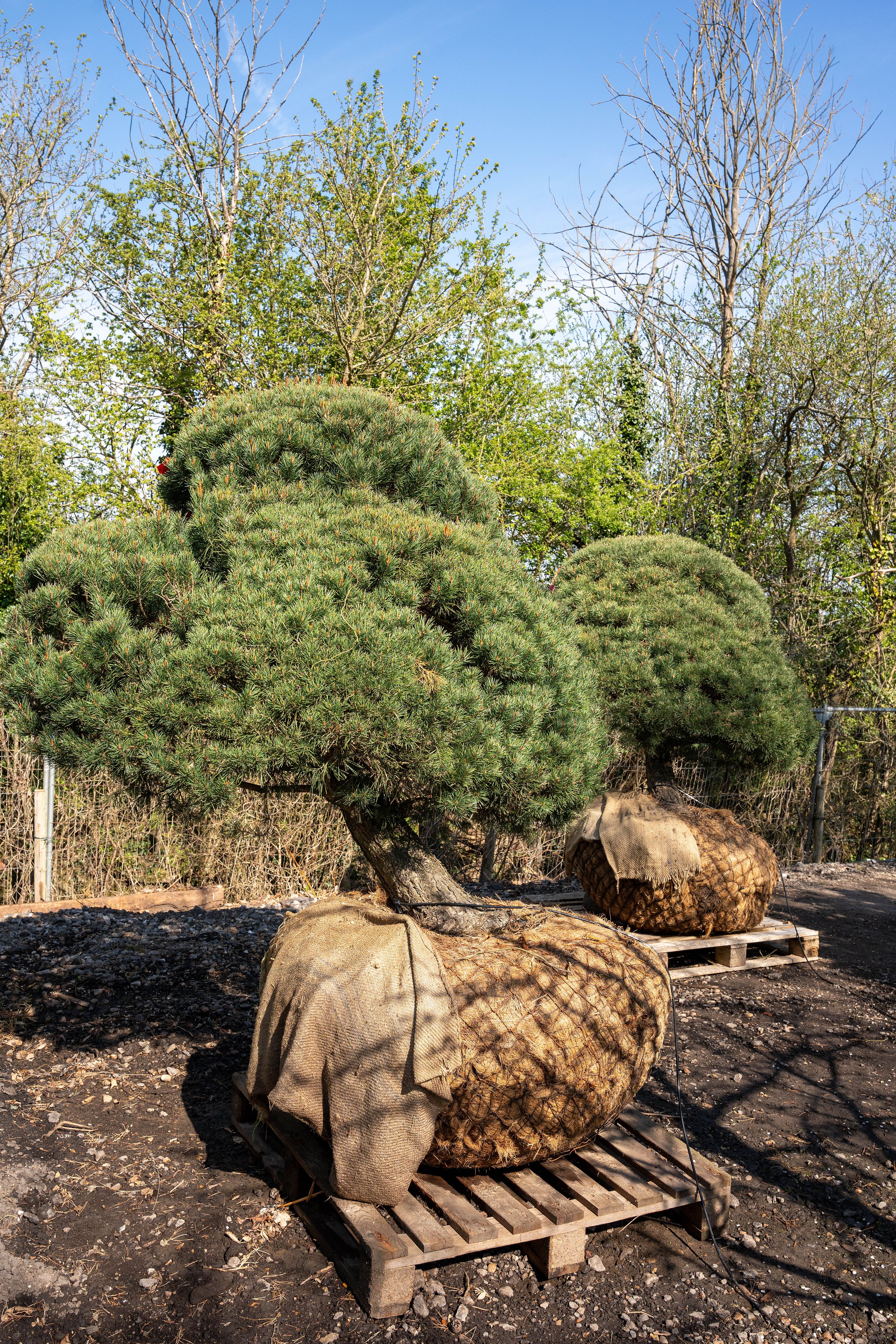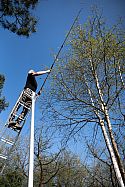Road to Chelsea 2025: dispatch 2 with Dr Catherine MacDonald & Baz Grainger
Two gardens for the price of one with our latest dispatch: when they’re not building show-stopping RHS Chelsea Flower Show gardens, Catherine and Baz work side by side at Landform, the award winning landscape company, which explains why, in spite of working on two different show gardens, they come as a pair.
Catherine has designed the Boodles ‘Raindance Garden’ and Baz, the Killik & Co. ‘Saving for a Rainy Day Garden’, and they have both been working with specialist nurseries Boom & Bonheur, in collaboration with Creepers, to source the best trees for the job(s). We joined them at Creepers’ Surrey base on a bright April morning to check on the trees and get stuck in with some preliminary pruning.
Initial conversations about what’s available and what state the trees will be in by the time they get to Chelsea begin as much as a year in advance, then towards the end of the summer detailed tree lists are finalised and the nursery teams begin the hunt for the best specimens possible.
This lead the designers to Boom & Bonheur’s fields in Germany, where many of the trees we were inspecting today began their lives. The sandy alluvial soil near the River Meuse, near the border with the Netherlands, is great place to grow trees, and a field trip is usually necessary to finalise the selection.
The journey to the UK can take it’s toll on the trees, and Catherine’s deciduous selection including Betula pubescens / downy birch and Acer x zoeschense / the Zöschen maple - a hybrid – had all suffered minor breakages along the way. Nothing a little skill (paired with a Niwaki Tripod Ladder and a few Japanese tools) couldn’t fix. Suitably kitted out, Catherine began work on removing any damaged branches and generally refining their shape.
It’s not always easy to decide what needs work and what doesn’t. The old adage of “measure twice, cut once” should certainly apply to pruning trees (if you substitute ‘measure’ for ‘inspect from all sides’). We watched with interest as Catherine reduced branches in stages, climbing down the ladder in-between before making a second cut to ensure she wasn’t making holes in the canopy. She was ably assisted by Robert Ryall, co-owner of Creepers, calling out what and where to cut with an expert’s confidence.
Michael Buck, head of horticulture at Creepers was also on the scene working on a fine Gingko, amongst other trees from Catherine’s planting scheme. Larger branches were getting the GR 210 Pruning Saw treatment, with new Daikiba Snips and the classic GR Pro Secateurs for the smaller cuts. The Daikiba Snips were especially sought after, with a chorus of appreciation for their accuracy and clipping power.
Some potential cuts were debated at length before the decision was made to make the final call once the leaves are out and the trees are in situ at Chelsea in a few short weeks. As Mark Gregory, founder and owner of Landform (also present and pruning away) noted “you only get one chance”.
Wandering a few metres deeper into Creepers’ site, we discover Baz’s collection of trees. In contrast to Catherine’s deciduous selection, for his garden Baz has chosen mostly evergreens, which are springier and therefore better suited to trans-European travel. These trees have been chosen as much for the colour of their bark, as for their foliage and shape, to match the palette of the planting and structures in the garden. The 3D printed pergola will have warm orange and pink hues, the stone is shot through with rusty veins and all this is complemented by light blue, peach and rusty orange underplanting. And you might want to keep your eyes peeled for some unusual irises …
Most of Baz’s work is higher up in the trees: a job for the Telescopic Pruners paired with the 11' EN-Pro Adjustable Tripod Ladder. Team work is the key with the telescopic tool – it’s not always so easy to get into the best position for pruning and still keep an eye on the bit that needs work, so a second pair of eyes is essential.
It’s not all evergreens: there’s a fine Prunus maackii / Manchurian cherry that Baz spotted when he was preparing for last year’s garden. Its polished golden-orange bark ties in with the other colours, although having picked up a bit of algae over the winter, it needs a good wash before it will be ready for the judges.
And speaking of judges: at the end of the visit Catherine was kind enough to reveal how the judging at Chelsea works, having been a judge at RHS Hampton Court where the same rules apply.
What we learnt is that it’s a pretty complicated process (to us, at least) that takes place in several stages, with gardens being assessed against 9 criteria with up to 4 points per criteria. We won’t pretend to understand it well enough to explain it to any readers who’ve made it this far, but please do visit the RHS website for a much clearer explanation if you would like to know more, and stay tuned for more Road to Chelsea updates over the coming weeks.









